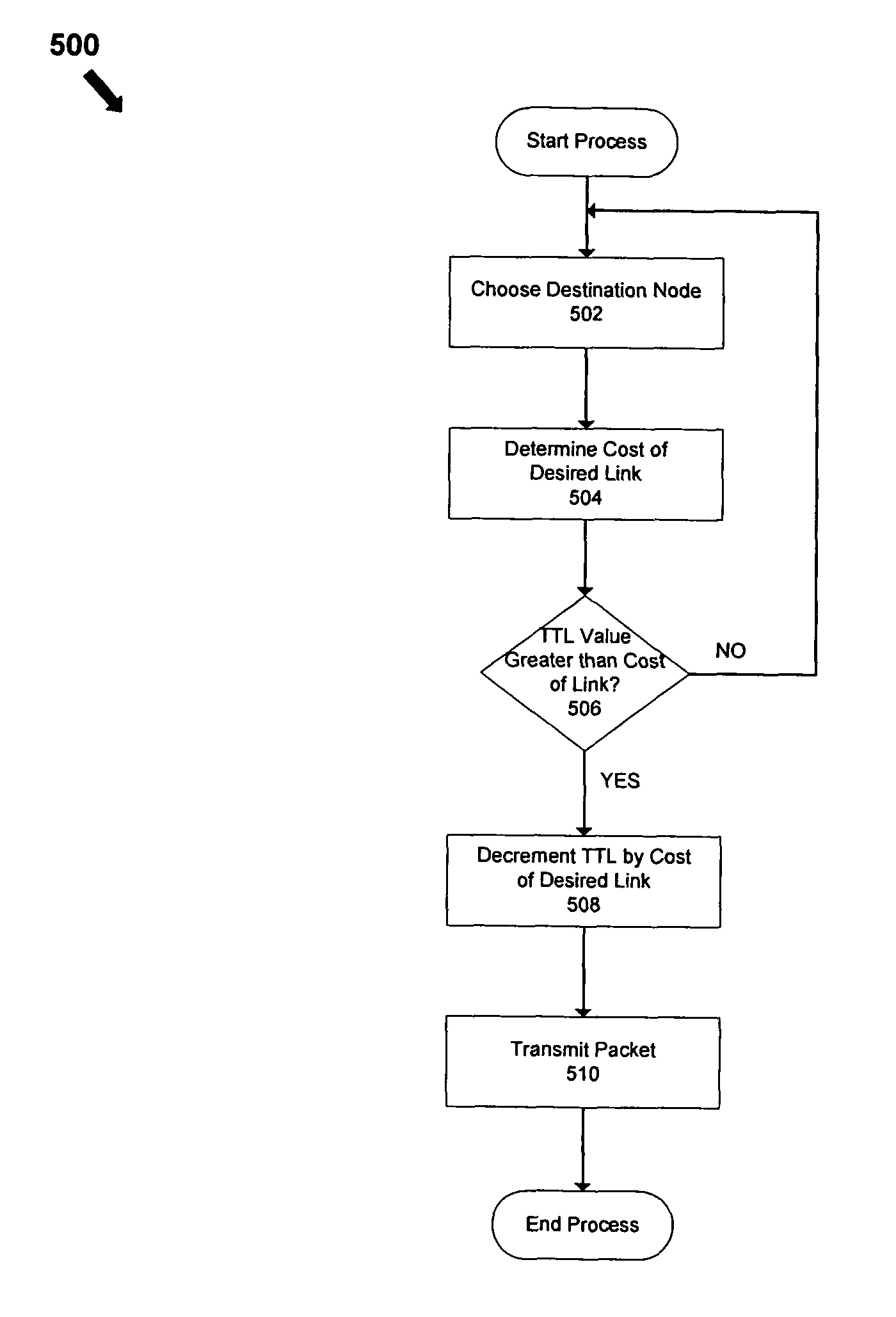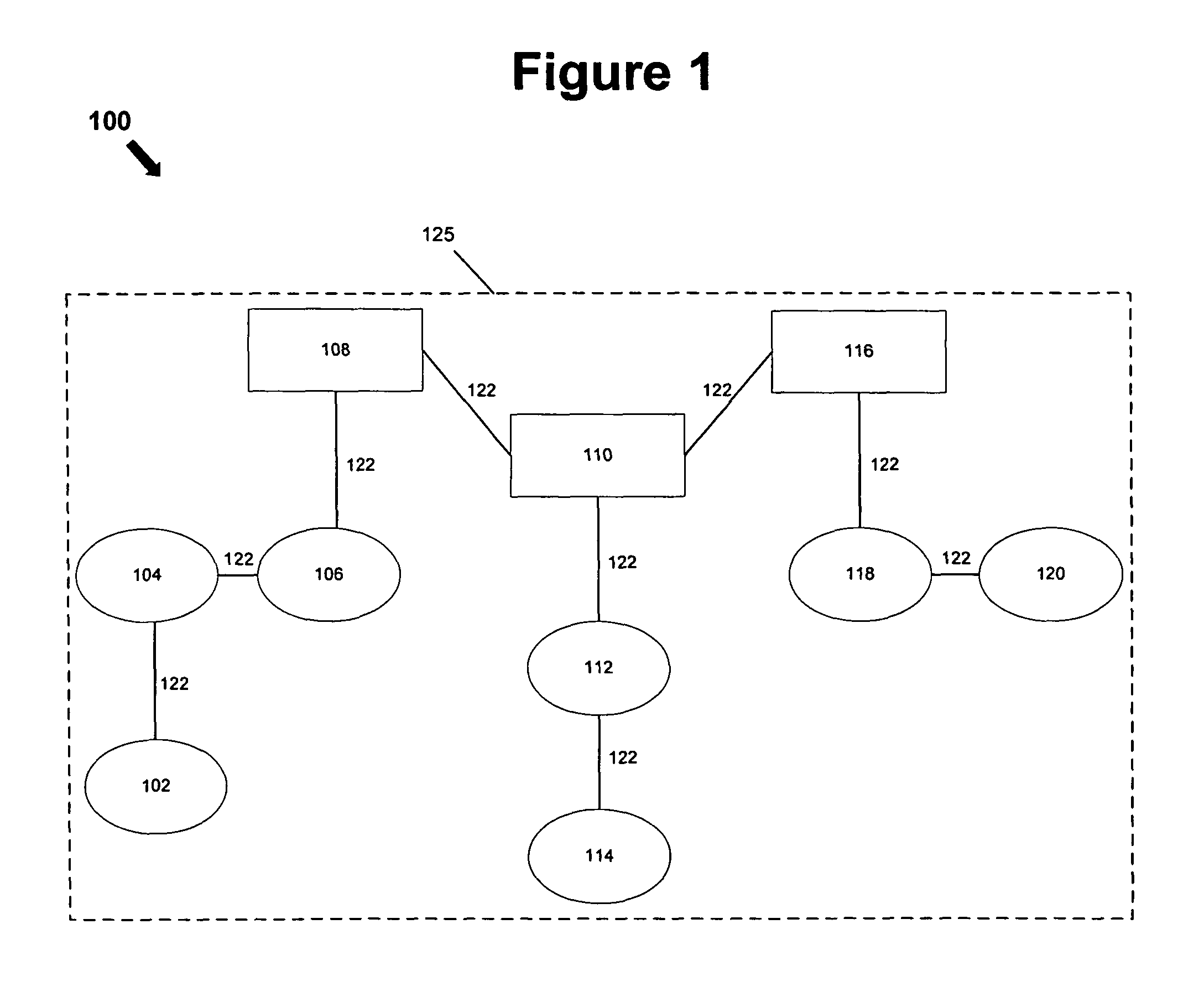Variable translucency no-sight routing for AD-HOC networks
a no-sight routing and ad-hoc technology, applied in data switching networks, frequency-division multiplexes, instruments, etc., can solve the problems of ad-hoc network topology that is subject to rapid changes, network management and routing techniques that have not been improved in recent years, and conventional routing approaches (commonly known as “link-state” routing) suffer from a number of limitations
- Summary
- Abstract
- Description
- Claims
- Application Information
AI Technical Summary
Problems solved by technology
Method used
Image
Examples
Embodiment Construction
I. System Overview
[0023]a. No Sight Routing
[0024]FIG. 1 is a block diagram illustrating an exemplary physical infrastructure of a system 100 for implementing a no-sight routing protocol. FIG. 2 illustrates an exemplary physical topology of a sub-network 125 implementing an exemplary no-sight routing protocol with predetermined propagation limits.
[0025]Exemplary system 100 generally comprises, among other things, nodes 102, 104, 106, 108, 110, 112, 114, 116, 118 and 120. Nodes 102-120 are connected to one another via connections 122, which may include any number of connections recognized in the art, including, for example, wires, wireless communication links, fiber optic cables, etc. Nodes 102-120 connected together via connections 122 collectively form sub-network 125.
[0026]In general, nodes 102-120 represent connection terminals within exemplary sub-network 125. In some embodiments, a protocol operating on a network above that of sub-network 125 distinguishes between nodes 102-120 ...
PUM
 Login to View More
Login to View More Abstract
Description
Claims
Application Information
 Login to View More
Login to View More - R&D
- Intellectual Property
- Life Sciences
- Materials
- Tech Scout
- Unparalleled Data Quality
- Higher Quality Content
- 60% Fewer Hallucinations
Browse by: Latest US Patents, China's latest patents, Technical Efficacy Thesaurus, Application Domain, Technology Topic, Popular Technical Reports.
© 2025 PatSnap. All rights reserved.Legal|Privacy policy|Modern Slavery Act Transparency Statement|Sitemap|About US| Contact US: help@patsnap.com



